Tomato is a significant vegetable crop for both income and nutrition. Tomatoes can be cultivated throughout the year. Tomato plants are tender, warm-season crops that are like to be grown under the sunlight and cannot bear frost. It is important not to plant the plants in the ground too early. In most regions, the outdoor soil is not warm enough to plant tomato plants until late spring and early summer, when they are a fall and winter crop. Tomatoes contain vitamins like ‘A’ and ‘C’ and are antioxidants in abundance quantity.
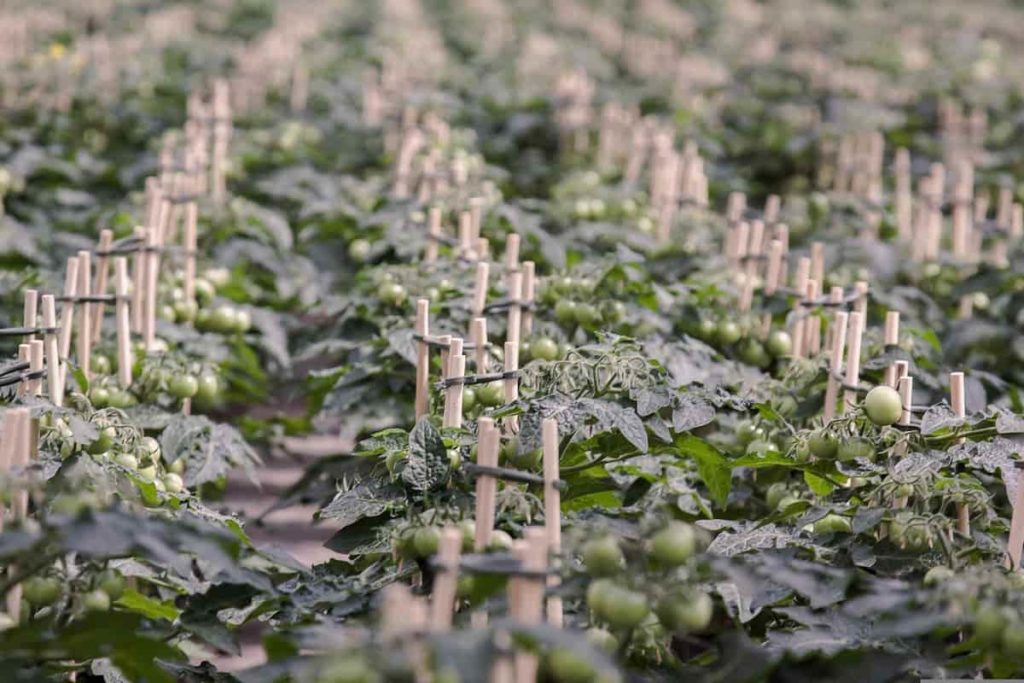
Tomatoes can thrive in various climates and conditions and are highly adaptable and easy to grow. Like any garden vegetable, tomatoes need the right soil to produce the best crop. To start the tomato farming business, you must know about tomatoes, such as their varieties, suitable cultivation process, and marketing process. Tomato is the most important and the largest producing food crop in the world. It cannot thrive in frost and humid environments. If you are planning for commercial tomato production or growing at home, the tomato farming guide for beginners will help you with required steps for cultivation.
Tomato farming guide for beginners
Soil requirements and site bed preparation
It can be grown in various types of soil ranging from sandy loam to clay, black soil, and red soil with proper drainage. These plants are well grown under well-drained sandy soil with high organic content. This farming guide will give an idea about the required soil conditions for tomato farming. The required pH of the soil for tomato farming should be 7-8.5 for good growth.
While anything pH value lower is acidic, and anything higher is alkaline for them. Tomatoes can be best grown in neutral or near-neutral soil, so modify the soil pH value accordingly for best results. Do not try to cultivate in high acidic soils. For early crops, light soil is beneficial, whereas clay loam and silt-loam soils are useful. And will give high yields.
The first step in preparing a new tomato bed is adding additional soil nutrients like compost or fertilizer, which should begin at least two weeks before outdoors transplanting the tomatoes. The bed size depends on how many tomatoes you want to grow, but space for each plant should be at least 2 square feet.
Tomato varieties for high yields
Carmello
Carmello type is well known for producing heavy clusters of round tomatoes on large plants. The fruits are typically 140 to 170 grams and are considered medium to large tomatoes. They have a pretty rich flavor that is sweet at the same time. These tomatoes can be harvested within 70 days, a short maturing time for an indeterminate plant. Carmello tomatoes are exceptionally disease-resistant, an excellent feature of any tomato plant.
Beauty
Beauty tomatoes are an heirloom indeterminate tomato plant that takes up to 78 days to harvest. These plants are highly productive, and these tomatoes are slightly flattened, juicy, and sweet. They have the perfect mix of acidity for a complex tomato flavor that suits sandwiches and salads. There are different varieties of Beauty tomatoes, and the Black Beauty tomato is one of the most popular black flesh tomatoes available.
Cherokee Purple
Cherokee Purple tomato is the most popular heirloom tomato. This variety produces large, dark purple tomatoes that are rich and full of flavor and are enormous plants. These tomatoes have bright red flesh that looks beautiful when sliced. Some plants reach up to six feet tall and need ample support.
Early Wonder
This tomato plant is an early producing high-yielding. This compact, determined tomato plant will take up to 55 days to harvest. Early Wonder tomatoes are well known for producing impressive crops of round, dark pink tomatoes.
Stupice
Stupice tomatoes are the more popular plant that produces large yields. These tomato plants are well known for producing fruits that have exceptional flavor and ripen earlier than others. Stupice tomatoes are indeterminate plants that take between 55 to 85 days to reach maturity.
Black Krim
Black Krim tomatoes are a variety that produces medium-sized tomatoes with dark maroon skin. These tomatoes are well known for being rich in flavor and extremely tasty. It takes about 80 days for this plant to reach full maturity, and expect large tomatoes.
Tangerine
Tangerine tomatoes are orange skins and are more popular for being incredibly sweet, delicious tomatoes. These plants reach maturity in 68 days and grow wonderfully in containers, so this is one of the best options for a balcony garden. They are known for being highly disease-resistant and have some of the most significant crops for determinate tomatoes.
Virginia sweets
Virginia sweets is a tomato plant that produces large one-pound tomatoes in red or gold color. These tomatoes have yellow flesh that is sweet and red flesh that adds a bit of tang flavor. Virginia Sweets plants take around 80 days to reach harvesting time. These plants are well known for heavy and large crops, so ensure ample staking or cages to hold this giant plant.
Jersey devil
Jersey devil is the perfect indeterminate tomato plant for a good paste tomato. It produces big, bold plump red tomatoes shaped like a banana pepper. The fruits typically measure about six inches long. This one has been a favorite paste tomato for decades. They need a support system to hold up the vines and expect a harvest within 90 days. Jersey devil is perfect for making sauce and fresh eating. The fruits are sweet, flavorful, and have lots of meat with few seeds and juice.
Russian big Roma
Russian Big Roma tomatoes are one of the perfect paste tomatoes. They are well known for being disease-resistant and producing many deep red fruits. Russian Big Roma is an indeterminate tomato type mature and ready for harvest in 90 days. The fruits are four-inch wide, and since they are paste tomatoes, they have plenty of meat and not a lot of juice. That will give the perfect sauce.
Tomato seed germination – transplantation
Tomato seeds will germinate in 5 to 10 days if optimal conditions are given. As soon as you see green plants emerging from the growing medium means seeds have germinated. The germination rate of tomato seeds depends on the source and age of the seed. It takes two to three weeks of growing to get seedlings ready to transplant into their pots. Transplant them outdoors when they have their first set of true leaves and after all the danger of frost has passed.
In case you missed it: How to Start Tomato Farming in Philippines: A Useful Growing Guide for Tomato Farmers
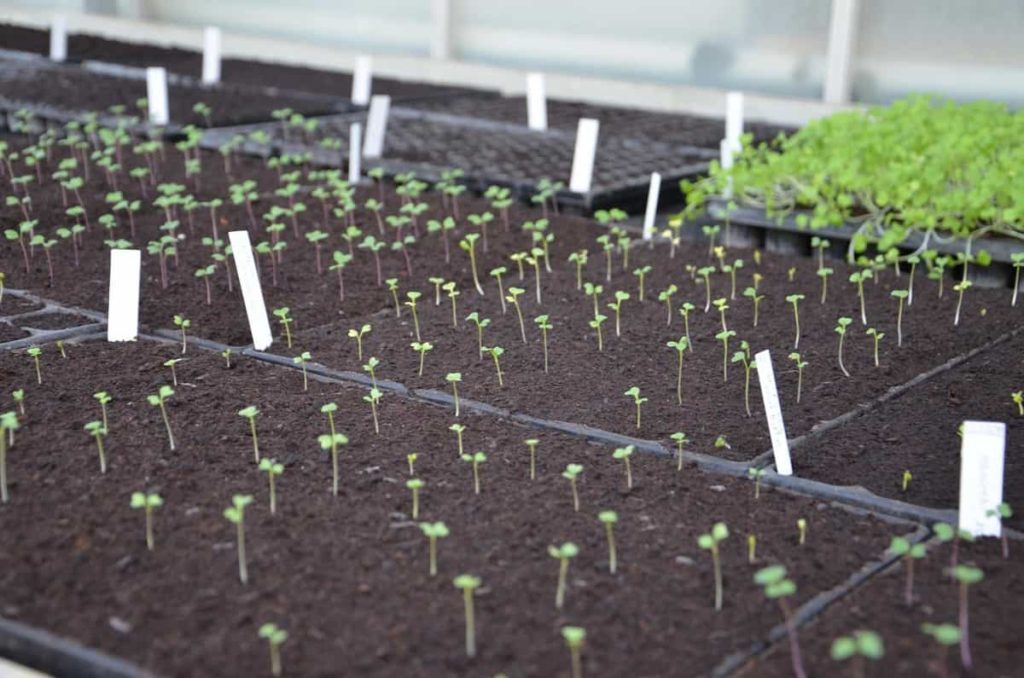
Dig and place tomato stakes in the soil. Staking can avoid disease and pests and help the plant stay upright. When planting seedlings, pinch off some of the lower leaves. Place the root ball deep enough till the bottom leaves are just above the soil’s surface. Alternatively, lay long, leggy transplants in trenches 3 to 4 inches deep on their sides. Bury the stems till the first set of leaves. Roots will form throughout the buried stem.
Tomato planting, spacing, and number of plants per hectare
Plant the tomato plants deeper than they come in the pot, up to the top few leaves. When planted this way, tomatoes can develop roots all along their stems. Make a stronger plant by digging a deep hole or a shallow trench and laying the plant sideways.
Spacing
The space between rows should be at least 4 feet apart. As staked tomatoes take up more space, they need more than 2 feet of space per plant in these rows. Tomatoes plants that do not have support require far more space as they spread along the ground, at least 4 feet between plants.
Tomato plants in rows deeply or on their sides in a trench, ensuring greater success in planting and a healthy root system. Correctly spaced tomato plants will produce healthy, disease-free, delicious tomatoes. Air circulation is important considering that disease spreads quickly in humid situations.
Plants for hectare
Many things will decide the number of plants required for a hectare of land. If you plan to plant the tomato plants with a 30 cm drip spacing will have 12,000 plants per acre and 30,000 plants per hectare, and a 40 cm spaced drip will have 10,000 plants per acre and 25,000 plants per hectare. However, the number of tomato plants per hectare starts from 10,000. You can plant as many as 50,000 plants based on the spacing and type of seed.
Tomato water requirement and scheduling irrigation
Watering is one of the important steps in any plant care. In the early growing season, for about the first four weeks after planting the seedlings, water the tomato plants daily in the morning. Water your tomato plants about 30 liters per square meter per week, or 4 liters per day. Irrigation scheduling once in two days proved the maximum firmness of the tomato. Drip irrigation is one of the effective adaptation methods to maintain the quality of vegetables like a tomato in a warmer climate.
Staking and pruning tomato plants
Avoid broken stems for plants growing four feet or less by inserting a bamboo cane or wooden stake into the soil. Loosely tie the stem using natural, degradable twine or upcycled strips of t-shirts to the stake. The prune side stems below the first fruit cluster to grow the strongest tomato plant. As a tomato plant matures, its lower leaves start converting to yellow. Ground touching branches should be removed. Leaves touching the ground will be susceptible to bacteria, fungi, and viral infections that can spread to the plant.
Windbreaks in tomato farming
The distance between tomato rows determines frequency or intervals between windbreaks, spray or harvest alleyway intervals, land availability, and equipment characteristics. For instance, bed arrangements will be such that a windbreak is present between every set of four, six, or eight beds.
Close windbreaks give the best wind protection, help moderate the tomato plants’ microenvironment, and enhance earliness. Mainly on sandy soils, windbreaks reduce damage from sandblasting of plants and small fruit during early spring. Windbreaks also conserve moisture by direct evaporation from the soil.
Drip irrigation in tomato farming
Drip irrigation is an effective method for supplying water and nutrients to high-tunnel tomatoes. Plants should be watered slowly through a small diameter collapsible tube without wetting the foliage. Use drip irrigation method to get maximum yield from tomato crop. During summer, give water at a frequency gap of 6 to 7 days; in winter, give water after 10-15 days. 60-70 percent of the water consumption can be saved and increased by 20-25% more production with the help of this irrigation system.
Tomato nutrient deficiencies
Nitrogen
Gradually older leaves change from green to paler green if the plant has N deficiency. As the deficiency progresses, these older leaves will become uniformly yellow. Leaves approach a yellowish-white color if the deficiency is extreme. The plant’s young leaves maintain a green but tend to become smaller.
Phosphorus
The symptoms primarily develop on older leaves showing necrotic spots, and plants are dwarfed. Phosphorus deficient plants develop very slowly, and plants develop a distinct purpling of the leaves stem, petiole, and undersides. Under severe deficiency conditions, leaves tend to develop a blue-gray luster.
Sulfur
These leaves show general overall chlorosis. The yellowing is more uniform over the entire plant, including young leaves. The reddish color is often found on the underside of the leaves. The veins and petioles will be very distinct and reddish. The leaves will become more erect, often twisted, and brittle with advanced sulfur deficiency.
Magnesium
The Magnesium deficient leaves show advanced interveinal chlorosis. Magnesium deficiency may superficially resemble potassium deficiency in its advanced form. The symptoms commonly start with mottled chlorotic areas in the interveinal tissue.
Manganese
The leaves will show light interveinal chlorosis progressed under a less supply of Mn. The early stages of chlorosis induced by manganese deficiency are similar to iron deficiency. As the stress increases, the leaves exhibit dark necrotic areas along the veins.
Zinc
The younger leaves will become yellow and develop in the mature leaves’ interveinal upper surfaces in the early stages of zinc deficiency. As the deficiency progress, these signs develop into intense interveinal necrosis; however, the main veins remain green.
Copper
The copper-deficient plant leaves are curled, and their stalks bend downward. Copper deficiency can be expressed as light overall chlorosis and permanent turgor loss in the leaves. Leaves show netted, green veining with areas to a whitish gray.
Iron
The iron-deficient leaves exhibit strong chlorosis at the base of the leaves. The most common sign of iron deficiency starts as interveinal chlorosis of the young leaves and ends as a bleached leaf. Iron deficiency is associated with calcareous soils and anaerobic conditions, and an excess of heavy metals often induces it.
Tomato plant problems – tomato pests and diseases
Tomato plant diseases
Tomatoes can suffer from all types of diseases and pests. Causes of diseases are often related to weather conditions, which can not be controlled. Tomato diseases can be fatal if management steps are not taken on time. It is important to treat any disease early before it spreads to remaining healthy tomato plants. The common diseases generally seen in tomato plants are stemphylium gray leaf spot, late blight, septoria leaf spot, southern blight, wilt, early blight, anthracnose, bacterial Speck, blossom end rot, buckeye rot, and gray wall.
Tomato plant pests
Pests made plant health conditions worse. They not only attack the plants, but they can also spread diseases themselves. Various insects like nematodes and mite pests can damage tomato crops. Russet mites and budworms are especially destructive. The plants can be affected at all stages of growth. Some pests which cause production losses in tomato farming include leaf miners, white fly, thrips, spider mites, aphids, stink bugs and leaf-footed bugs, hornworms, fruit worms, cutworms, wireworms, nematodes, psyllids, and beetles.
Tomato production using plastic mulch
Mulching resulted in a 24% to 65% increase in marketable yield compared to bare soil. And it also increases the soil temperature, which helps establish the early planting of tomato plants in cold areas. Red color plastic mulch is mostly used to grow tomatoes. Red mulch increases the quality of the fruit but not the yield much.
But when red reflecting mulch is used, there is a significant growth of 15-20% yield in early tomatoes compared to black mulch. The mulch material traps moisture and heat, limiting plant nutrient loss. Plastic mulch is the most moisture restrictive of all the mulching materials available on the market, so it pairs best with a drip irrigation system.
In case you missed it: How to Start Dragon Fruit Farming/Pitaya in Thailand: A Step-by-Step Guide for Beginners
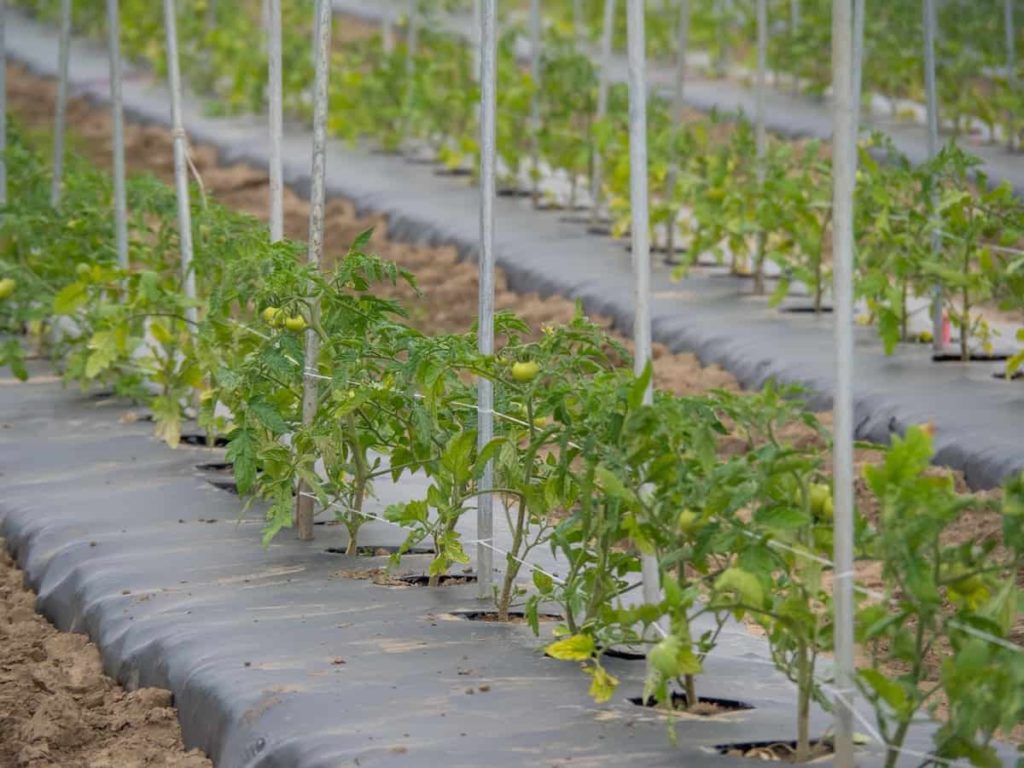
Fertilizer management in tomatoes
Tomatoes are often labeled heavy feeders. These heavy feeder plants draw more nutrients from the soil than others and need those extra nutrients to thrive. Fertilizing is one of the major steps in supplying nutrients to plants. Tomatoes need fertile soil to produce good fruits, but too much fertilizer is never good. Excess fertilizer will burn the roots and lead to many plant problems due to a nutrient imbalance.
This tomato farming guide will give you an idea about fertilizing in tomato farming. Tomato plants are only fertilized at two stages of their growth. They need to be fertilized soon after planting and just before fruiting. Transplanted tomatoes need some time to adjust to their new homes. Feed the plants with the first round of fertilizer while transplanting.
This fertilization can be done by mixing them with the soil or leaving it at the bottom of the planting hole. Depending on the fertilizer used, it could also burn the roots if they come into contact. The second phase of fertilization should be applied when the plant starts fruiting. Fertilizing at this stage will boost the plant to produce bigger, better fruits before harvesting.
Compost management in tomatoes
Well-amended soil, rich compost, and other organic material is the secret weapon to having the best tomatoes around. There is no artificial substitute for good old-fashioned compost. The base source of any compost should be an organic material like garden wastes, clippings, small twigs, etc. The second layer will be animal manure, fertilizers, or starters, increasing the internal temperature.
When transplanting tomato plants, compost should be liberally in the planting hole. Mixing in a 50/50 ratio of soil and compost into the planting hole is the perfect way to get a great start. Plants easily and quickly absorb the nutrients within the compost. It can supply those nutrients to the roots or through the leaves of the plants.
Tomato harvesting time and procedure
Plants start yielding after almost 70 days after transplantation. Harvesting depends on purpose like for fresh market, long-distance transport, etc. Mature green tomatoes, 1/4th fruits portion gives pink color are harvested for long-distance markets. Almost all fruits turn pink or red, but having firm flesh is harvested for local markets. For processing and seed extraction purposes, fully ripe fruits with soft flesh are taken from the plants.
In case you missed it: A Guide to Regenerative Agriculture: What is Regenerative Agriculture?, How to Start from Scratch
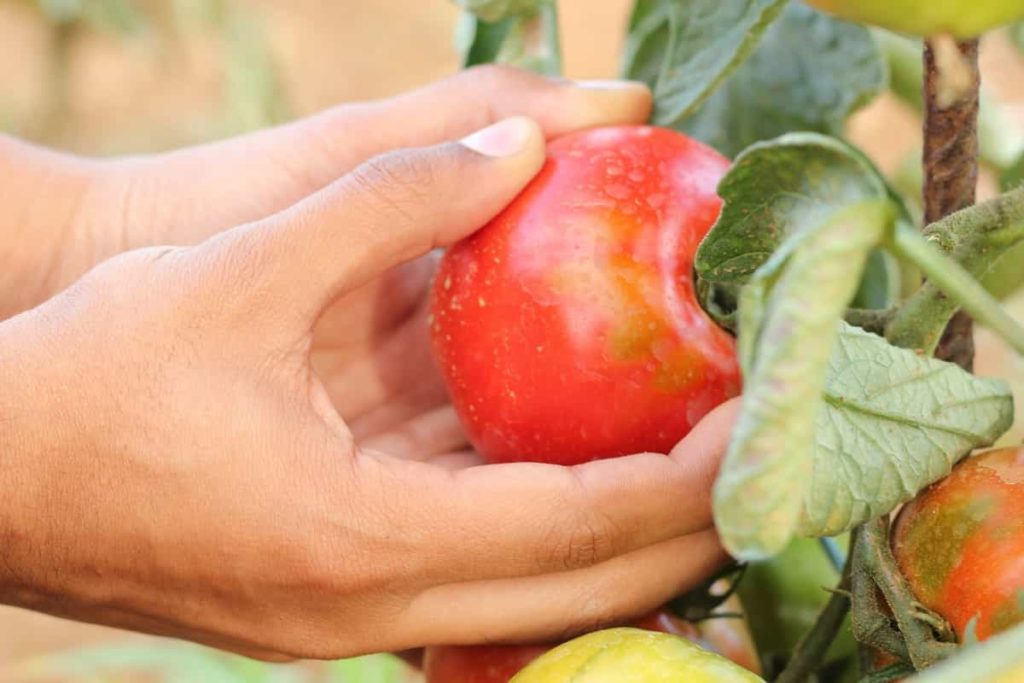
Tomato yield per acre, hectare, and per plant
Yields on outdoor tomato farming on stalked crops are approximately 60-100 tonnes per hectare. Due to their smaller crop cycle, some varieties do not usually yield more than 30-50 tonnes per hectare. From 1 acre of tomato farming with four pickings, the farmer can get around 10 tonnes/acre or 10000 kg/acre. A good tomato type in good health conditions can yield 20 to 90 tomatoes from a single plant. So, a plant can produce at least 20 tomatoes from one plant. The size and yield per tomato plant also vary between varieties.
Storing the tomato seeds for the next crop
Most tomatoes hold 100 or more seeds, so a few fruits are required for seed saving. Seeds from hybrid varieties will not come true to type, so only save those from traditional, open-pollinated tomatoes, sometimes called heirloom or heritage varieties. This farming guide will help prepare and save the seeds for the next corp. It is very easy to save the tomato seeds from one year to the next, cutting the seed bill and, in time, creating plants that perfectly suit the growing conditions. Below are the basic steps involved in preparing tomato seeds
- Separate the seeds from the fully ripened fruits
- Clean the seeds thoroughly and separate them from the juice
- Dry the seeds in direct sunlight to remove the moisture
- Store the seeds in airtight containers for the next corp.
Hydroponic tomato production
Hydroponic tomato plants are grown in a nutrient solution, not in the soil, and placed in a non-soil material that can support their roots. Growing tomatoes hydroponically allows the grower to raise them in a controlled environment, leading to less chance of plant disease, faster plant growth, and greater crop yield. Hydroponic tomato plants can take almost 60 days to harvest. Within the first 5-10 days, hydroponic tomatoes will start germinating and sprout. After 4-6 weeks, you can notice rapid growth of the plant. And by two months, you should be able to begin harvesting the fruit.
In case you missed it: Oklahoma Vegetable Planting Calendar (OK): Month Wise for Fall, Spring, Summer, Winter, Zone 6, Zone 7, and Zone 8
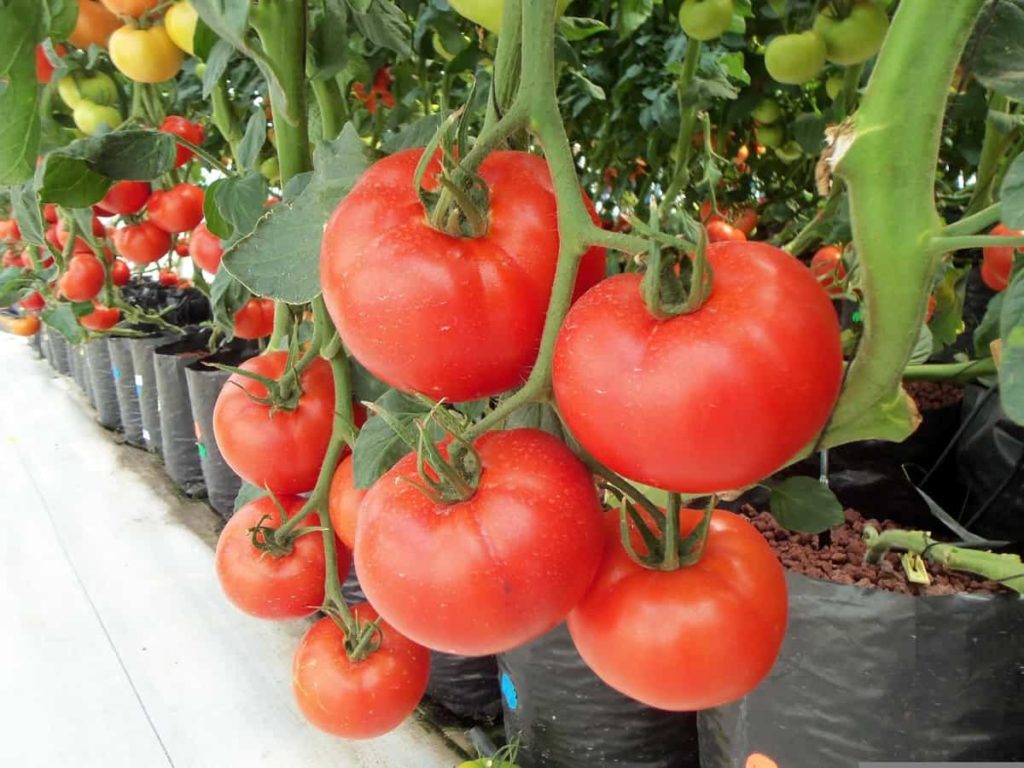
Greenhouse tomato production
The goal of greenhouse tomato production is to get the maximum sustainable yield of high-value tomatoes for profit. Plant balance is partitioning the plant’s resources towards vegetative growth, the production of stems and leaves and growth, and fruit production. Another advantage is greenhouse tomatoes can be grown year-round. To grow tomatoes in a greenhouse, consistently maintain a warm temperature, plenty of sunlight, & good ventilation. Tomato plants should be staked, and the soil will likely need fertilizer.
In case you missed it: Top 29 Vertical Vegetable Garden Ideas for Beginners: Check How this Guide Helps Home Gardeners
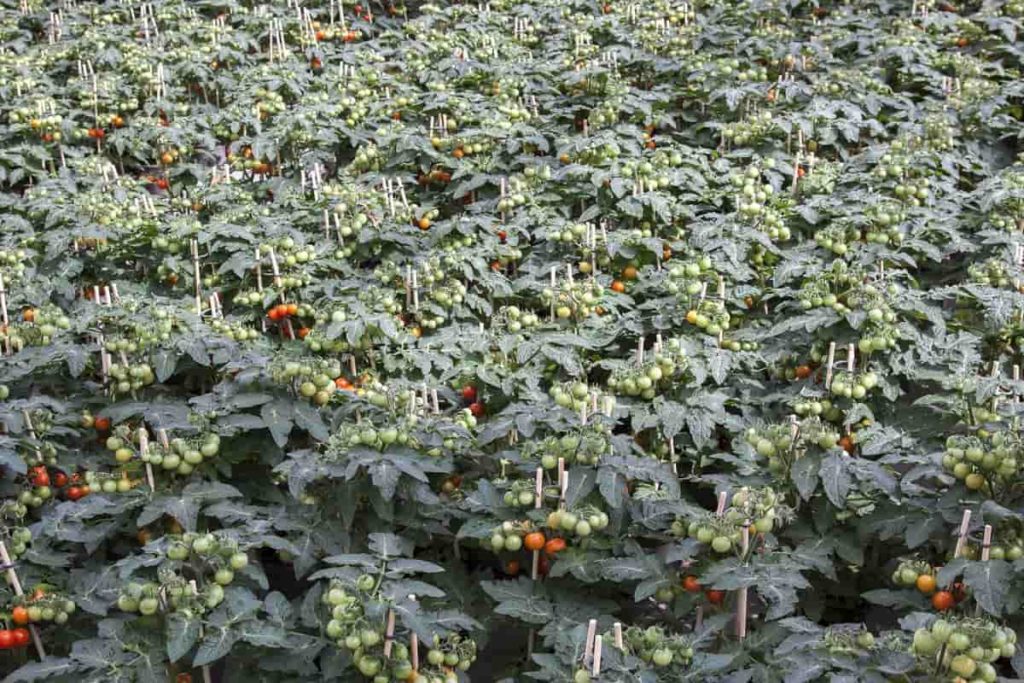
- Management Pests and Diseases in Your Cotton Field
- Sheep Farming Business Plan for Beginners
- Aquaponic Farming at Home: A Step-By-Step Guide
- Profitable Village Farming Business Ideas in 2024
- High-Yield Aquaculture: Fast-Growing Fish for Farming
- Effective Fish Pond Construction Techniques for Beginners
- Irrigation and Water Management in Pineapple Farming
- Blossom to Harvest: Mastering Flowering and Pollination in Papaya Farming
- Pig Fattening Essentials: From Selection to Sale for Beginners
- Raising Wagyu Cattle: A Complete Guide for Premium Beef Production
- Soil Types and Their Water Holding Capacity
- Optimizing Irrigation Schedules for Coconut Groves for Enhanced Yield
- Espresso Your Garden: Coffee Grounds for Healthier Acid-Loving Plants
- The Best Soil Mix for Snake Plants: How to Mix Your Own Snake Plant Soil
- Green Thumb Success: Expert Tips for Cultivating Greenhouse Beans All Year Round
- Bloom All Year Round: The Ultimate Guide to Indoor Hyacinth Care
- Eco-Friendly Gardening: How to Make Liquid Fertilizer from Kitchen Waste
- Ultimate Guide to Grow Anise in Pots: Explore Seed Propagation to Harvesting
- Guide to Raising Chester White Pigs: Discover Breed Facts to Growth Management
- Mastering the Elegance: The Ultimate Guide to Weeping Cherry Tree Care, Planting, and Maintenance
- Ultimate Guide to Planting Garlic in Grow Bags: Growing Strategies for Beginners
- How to Fix Spider Plant Leaf-Related Problems: Natural and Organic Remedies
- 10 Reasons Why Your Tulsi Plant is Shedding Leaves: Home Remedies and Solutions
- Optimizing Growth and Yield: The Advantages of Palm Bunch Ash Fertilizer
- Utilizing Neem Oil Extract as a Natural Pesticide for Hydrangea
- From Soil to Harvest: Various Ways in Which Farmers Can Use AI Tools
- Steps to Encourage and Induce Citrus Flowers: A Comprehensive Guide
- How to Fix Snake Plant Leaf-Related Issues: Natural and Organic Remedies
- Transform Your Garden into a Fragrant Oasis with Raat Ki Rani (Night Blooming Jasmine)
- Discover the Ideal Chicken Breeds for Philippine Farms
- How to Create a Poultry Egg Farm Business Plan for Profits
- Grow Lemon Cucumbers Like a Pro: Insider Techniques for Bountiful Yields
- Ultimate Guide to Caring for Your Pink Princess Philodendron: Tips for Thriving Variegation
- Areca Nut Profit Per Acre: Calculating Yield and Cost of Cultivation
- How Kaveri Chicken is Becoming a More Profitable Breed in Indian Backyards
- Transform Your Barn: 9 Steps to Convert a Horse Stall into a Chicken Coop

It is a very useful blog and very important information about Mulch.
It is a very useful blog and very important information about Mulch.